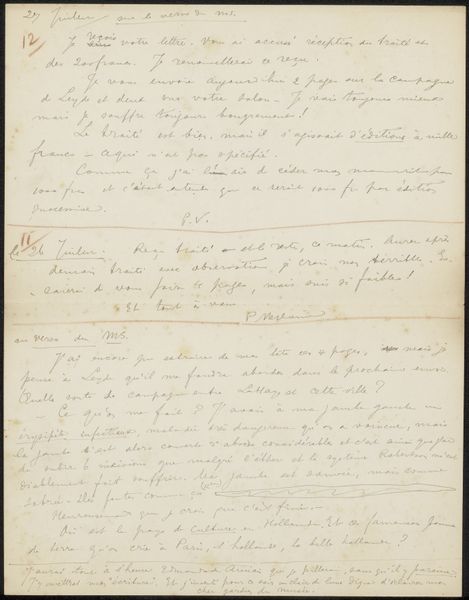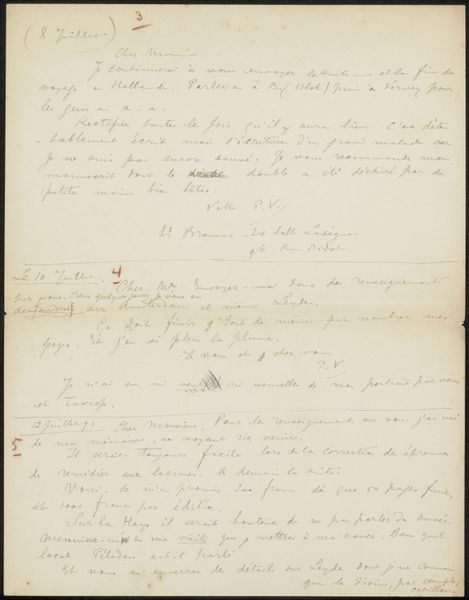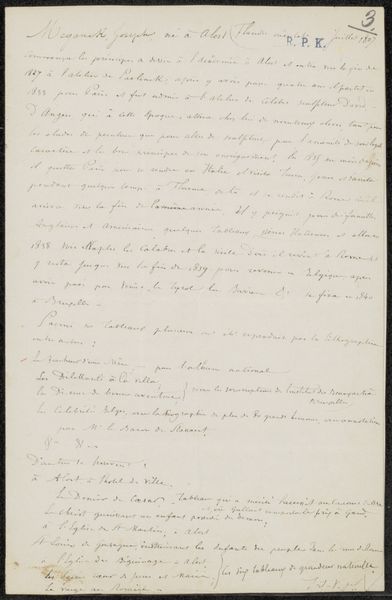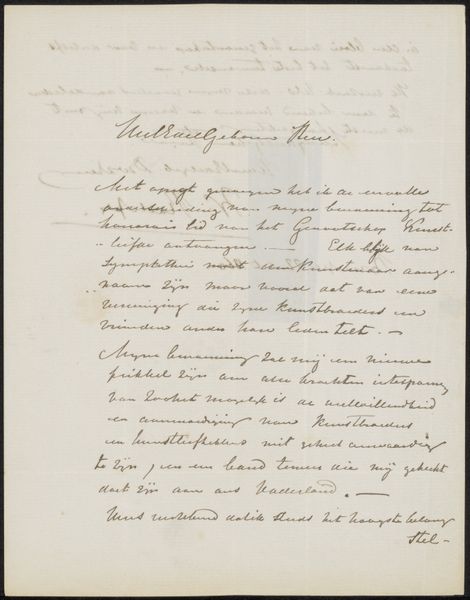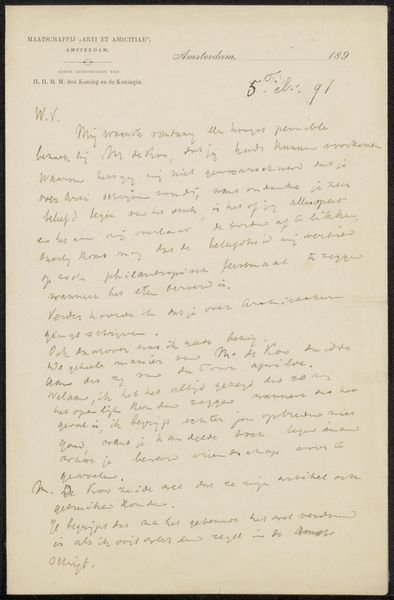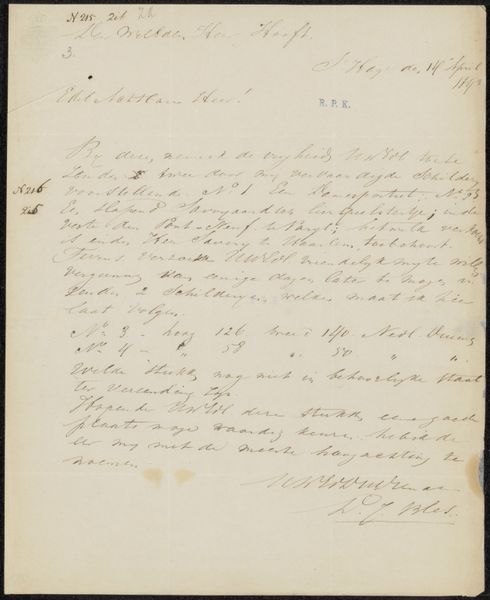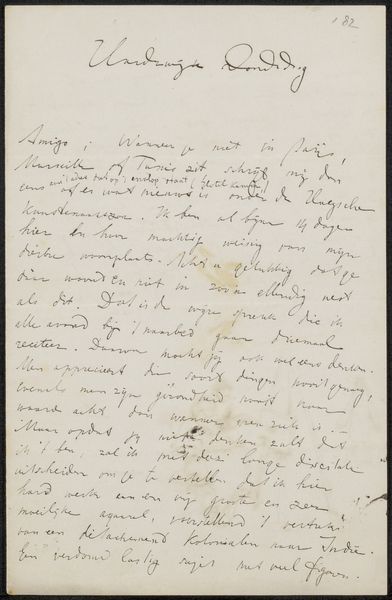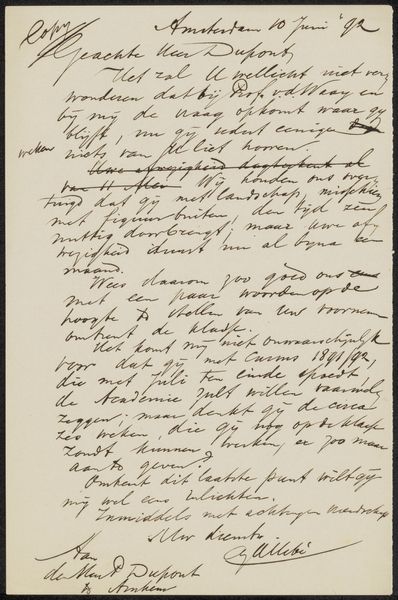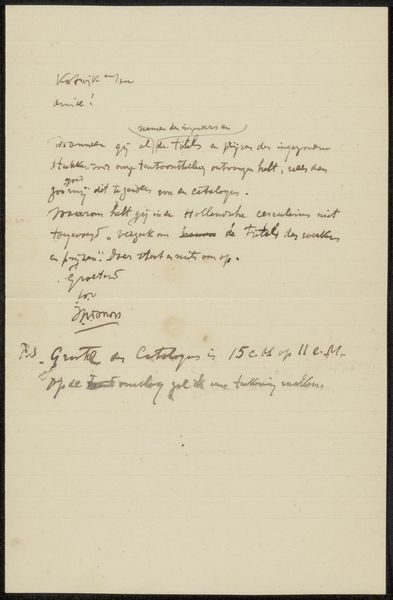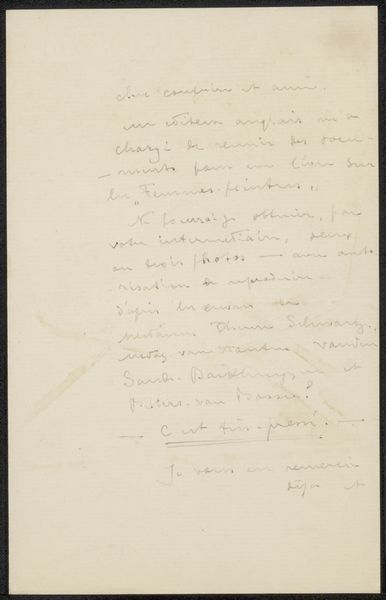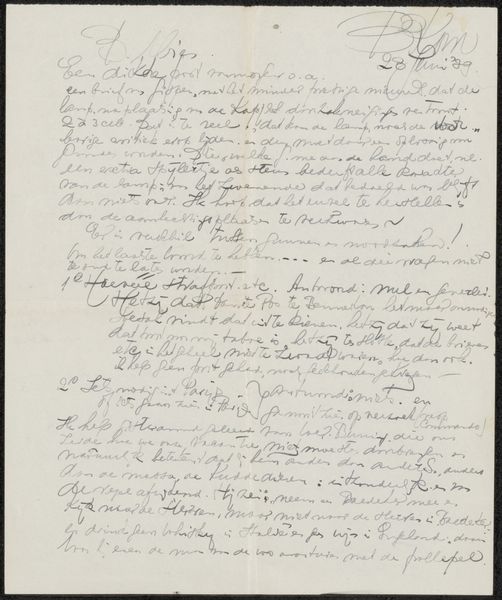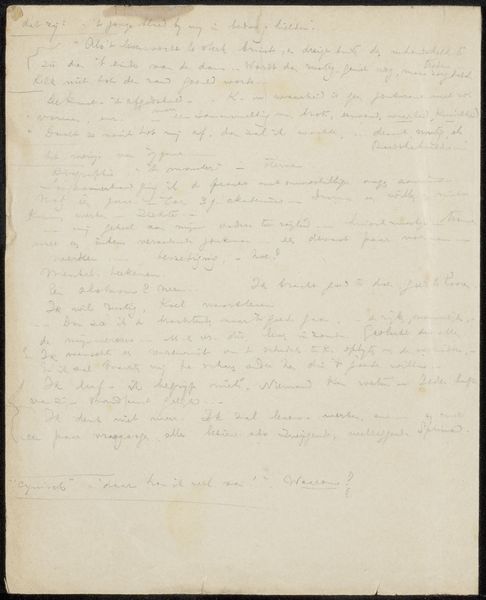
drawing, textile, paper, ink, pen
#
drawing
#
textile
#
paper
#
ink
#
pen
#
calligraphy
Copyright: Rijks Museum: Open Domain
Curator: This letter, “Brief aan Philip Zilcken” by Paul Verlaine, presumably from the 1890s, showcases the raw materiality of correspondence. It’s ink on paper, humble materials for potentially explosive ideas. What strikes you first? Editor: Well, just seeing this letter gives me a sense of intimacy, a glimpse into the personal life of the artist. What do you see in this piece beyond just a personal message? Curator: The process of writing is laid bare here. Look at the ink bleed, the corrections, the hurried script. It emphasizes Verlaine's labor, his hand physically shaping the message. Consider the paper itself: was it expensive, readily available? Its quality, texture, and source all played a role in shaping this communication. Is it ordinary paper or something else? Editor: It looks fairly simple, maybe even scrap paper, something easily accessible for him to just jot notes on. So, would you say that the message written *on* the paper is not as important as the paper *itself*? Curator: Not necessarily less important, but inseparable. The physicality of the letter impacts the reception of its contents. Verlaine's intended audience, Zilcken, would have experienced the tactile nature of this object, further shaping their understanding of his words. It's not just about the message, but also the material exchange, the evidence of the writer's hand. Think of it in contrast to our current mode of digital communication; what do we lose? Editor: I never considered how much the actual *paper* contributes to the artwork's meaning. Knowing its materiality and the cultural conditions around the resources helps broaden my perspective! Curator: Exactly! Considering the context of production illuminates how we interpret the 'high art' of Verlaine’s words.
Comments
No comments
Be the first to comment and join the conversation on the ultimate creative platform.
